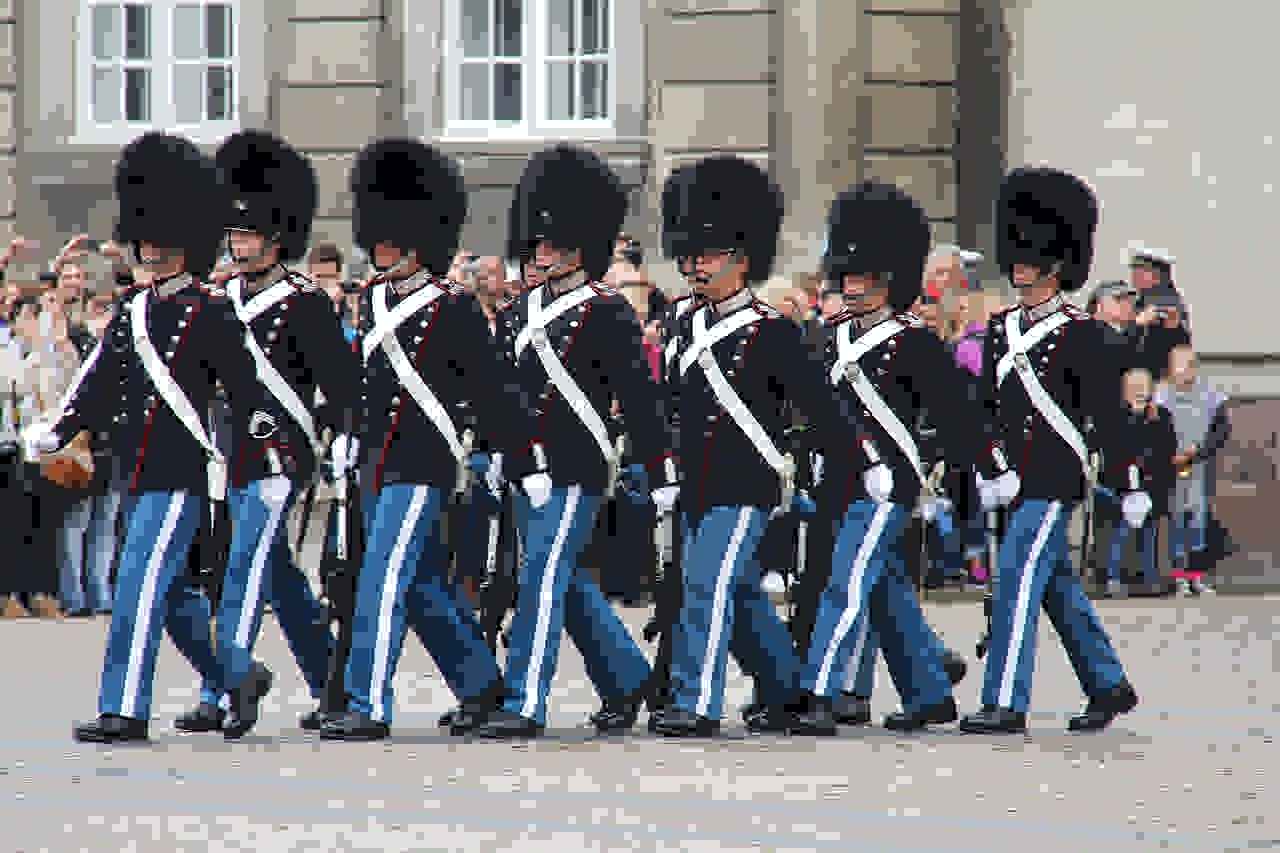In Danish, fascisterne literally means “the fascists.” But the term carries far more than a literal translation — it’s loaded with historical memory, moral judgment, and cultural imagery. When Danes say fascisterne, they are often invoking memories of authoritarian politics, wartime collaboration, and the social wounds of the 20th century. This makes the word both a descriptor and a rhetorical weapon: used to identify an ideology, to condemn a movement, or to warn about political tendencies that threaten liberal democracy.
Who Are the fascisterne?
That intensity comes from real historical experience. Denmark experienced homegrown National Socialist movements in the 1930s and a German occupation between 1940 and 1945 that forced difficult choices on politicians and citizens alike. Those events shaped how Danish society remembers and represents fascism — and why fascisterne still sparks heated debate in politics, media, and education. For many, the term a reminder of the fragility of democracy and the responsibilities of civic memory. For others a contested label sometimes used rhetorically in modern political fights.
(Sections below will examine the historical roots of Danish fascist movements, how fascisterne have been represented culturally, the term’s modern-day relevance, and lessons Denmark draws from its past.)
Historical Timeline of fascisterne in Denmark
Early Roots and Interwar Politics
Between the world wars, Denmark — like other European countries — saw an array of radical right-wing organizations that borrowed ideas and aesthetics from Italian fascism and German National Socialism. Numerous small national-socialist and fascist groups formed, sometimes led by charismatic personalities who admired the apparent order and rapid modernization achieved in other countries. Scholarly surveys suggest that dozens of national-socialist groups existed in Denmark in the 1920s–1940s era, reflecting a fragmented far-right scene rather than a single powerful party.
The largest of these pre-war movements was the National Socialist Workers’ Party of Denmark (DNSAP), which explicitly modeled itself on Hitler’s NSDAP. DNSAP never gained majority support, but it represented the clearest Danish alignment with Nazi ideology before and during the early occupation period. Its existence — and the fact that a minority of Danes sympathized with or joined such groups — is part of why the word fascisterne carries salience in Denmark.
Occupation, Collaboration, and Resistance
Denmark’s wartime experience strongly shaped postwar memory. German forces occupied Denmark in April 1940. Initially, the occupation involved a level of cooperation with existing Danish political and administrative structures, but tensions and moral dilemmas deepened as the war progressed. Many Danes resisted the occupation in diverse ways — from underground intelligence and sabotage to large-scale civil efforts to protect persecuted people. The celebrated rescue of most of Denmark’s Jewish population to neutral Sweden in 1943 is a central story of Danish resistance and solidarity during the Nazi era. That moral contrast — courageous rescue and determined resistance versus collaboration and ideological sympathy among a small minority — is an essential backdrop to how fascisterne are understood.
Postwar Aftermath and Persistence
After the war, overt Nazi parties stigmatized and politically marginalized. Yet extremist ideas never vanished entirely. Some members of prewar and wartime movements either retreated into private life or later regrouped in new formations; in the decades since, occasional neo-Nazi groups and far-right splinter movements have reappeared, sometimes focusing on racism, anti-immigrant platforms, or international extremist networks. Denmark’s experience shows how fascist ideas can mutate and persist beneath the surface even after formal political defeat.
Cultural Perception & Representation
How fascisterne Are Portrayed
Cultural works — novels, films, television, and theater — have been central in shaping public perceptions of fascisterne. Danish literature and cinema have often explored the moral complexity of occupation: stories of resistance heroes, quiet everyday acts of defiance, as well as portrayals of collaborators and sympathizers who made grave choices under pressure. These narratives help create a vivid cultural memory that reinforces negative associations with fascist ideology, while also spotlighting the bravery of ordinary citizens.
Documentaries, museum exhibits, and school curricula further embed these portrayals. For example, exhibitions on World War II and the occupation period commonly highlight both the dangers of authoritarianism and the civic virtues that helped protect vulnerable neighbors. Educational storytelling underscores that fascisterne—as historical actors—represented an attack on democratic norms and human rights, and it shows the costs of complicity.
Public Sentiment: Then vs. Now
Public sentiment toward fascisterne has been overwhelmingly negative since the end of World War II, anchored by the wartime memory of occupation and the moral clarity of rescue and resistance stories. However, the reception is not static. During periods of social anxiety — economic stress, rapid demographic change, or perceived cultural threats — certain far-right narratives can gain traction among segments of the population. Importantly, while many contemporary right-wing parties in Denmark focus on immigration, sovereignty, or welfare-state conservatism (rather than explicit fascist ideology), these debates sometimes create rhetorical space where terms like fascisterne are invoked in political accusations or warnings.
Role of Education and Collective Memory
Denmark’s schools, museums, and public commemorations play a huge role in shaping how generations learn about fascisterne. By teaching the history of occupation, the rescue of the Jewish population, the moral choices people faced, and the consequences of extremist ideologies, institutions aim to cultivate a democratic ethic that is alert to the signs of authoritarianism. That cultural responsibility — to remember, analyze, and pass on the lessons of the past — is one reason the term fascisterne continues to function as both a historical label and a civic red flag.
Modern-Day Relevance of fascisterne
Are fascisterne Present in Denmark Today?
If the question is whether an organized, mainstream fascist party analogous to the 1930s DNSAP currently controls Danish politics, the answer is no. Modern mainstream parties operate within democratic norms and parliamentary competition. However, Denmark — like many European countries — faces the ongoing reality of far-right fringe movements, extremist networks, and occasional street provocation by leaders and groups who traffick in xenophobia or authoritarian rhetoric. Some contemporary figures and groups accused of flirting with or borrowing from fascist iconography or ideas, even when they deny direct association with historical fascism.
The Contemporary Far Right
Over the past decades, mainstream right-leaning parties in Denmark (and Nordic neighbors) have sometimes adopted stricter immigration policies and nationalist rhetoric, arguing this is necessary to protect social cohesion and welfare provision. Separate from those mainstream debates are more radical actors: neo-Nazi groups, transnational white-supremacist networks, and provocative street-level figures who intentionally cross legal and moral lines.
A notable contemporary example is the rise of high-profile provocateurs like Rasmus Paludan, who have used extreme anti-Muslim rhetoric and public stunts (such as burning Qur’ans) to provoke and mobilize supporters. Such actors often described as far-right or extremist and compared rhetorically to fascist tendencies by critics, though they deny being Nazis. These cases show how the label fascisterne can be used in modern debates to name what critics see as authoritarian or dehumanizing tactics.
More explicitly extremist groups — neo-Nazi parties and networks — also exist on Denmark’s fringe. While numerically small, these groups can be dangerous: they sometimes engage in violence, online radicalization, and transnational networking with other extremist scenes. Danish authorities and civil society monitor and respond to such threats, prosecuting criminal acts, monitoring terrorism risks, and supporting counter-extremism work.
How fascisterne Is Used Today
Language matters. In modern protests and political discourse, calling someone fascist (or invoking fascisterne) is a powerful accusation. It deployed by opponents to discredit policies or leaders seen as authoritarian. Conversely, some on the right accuse left-leaning critics of weaponizing the term to shut down legitimate debate. This rhetorical tug-of-war is part political contest and part cultural memory clash: the word fascisterne continues to function as both historical indictment and present-day alarm bell.
Lessons from the Past & A Path Forward
What Denmark’s History with fascisterne Teaches Us
Three broad lessons emerge from Denmark’s experience:
- Democratic norms are fragile but teachable. The story of wartime resistance, civilian solidarity, and postwar democratic renewal shows that civic culture matters; societies that cultivate democratic values tend to resist authoritarian temptations more robustly. Educational systems and public memory projects play a central role in this cultivation.
- Extremist ideas rarely vanish entirely; they morph. The 20th-century fascist parties were defeated, but ideas and sympathies can reappear under new guises (eco-fascism, radical ethno-nationalism, incendiary populism). Vigilance and nuanced responses — blending law enforcement, social policy, and education — are more effective than simple denial.
- Public responsibility matters. The Danish example of protecting Jewish citizens in 1943 shows how broad civic engagement — ordinary people helping neighbors — can blunt the effects of authoritarian violence. Cultural institutions, political leaders, and citizens all share responsibility for keeping inclusive democracy healthy.
Cultural Responsibility
Remembering fascisterne honestly requires balance: historians and educators need to document collaboration and sympathy where it occurred, but also to celebrate resistance and solidarity. Overly simplistic narratives that flatten nuance can make it easier for modern extremists to manipulate resentment or identity grievances. Instead, public memory should teach complexity: how social, economic, and political conditions can push people toward authoritarian solutions — and how democratic institutions, norms, and civic courage can counter those pressures.
Practical Steps to Build Resilience
- Education with critical thinking: Teach not only historical events but the political mechanics of how extremist movements grow (propaganda, scapegoating, institutional capture).
- Robust social safety nets: Economic insecurity can be fertile ground for extremist recruitment. Policies that protect livelihoods reduce that vulnerability.
- Legal and law-enforcement tools: Continue targeted legal action against criminal extremist activity while protecting free speech and legitimate dissent.
- Community engagement: Encourage local initiatives that build cross-group ties and counter polarization (libraries, sports, civic associations).
- Vigilant media literacy: Support programs that help citizens detect misinformation and organized disinformation campaigns often used by extremist groups.
Final Reflection
Fascisterne is more than a historical term in Denmark; it is a living signpost that points to painful chapters of compromise and courageous chapters of resistance. Danish culture’s continued engagement with this word — through museums, teaching, literature, and public debate — keeps an important conversation alive: how societies remember evil, how they learn from it, and how they prevent its return.
No single strategy will immunize a society against authoritarian impulses. But Denmark’s combination of strong civic institutions, a culture that commemorates rescue and resistance, and ongoing public debate about extremism offers a model: remember clearly, educate widely, and respond practically. When fascisterne is invoked today, it should do more than inflame; it should compel us to ask how to strengthen democratic norms so future generations don’t have to face the same choice between collaboration and courage.



